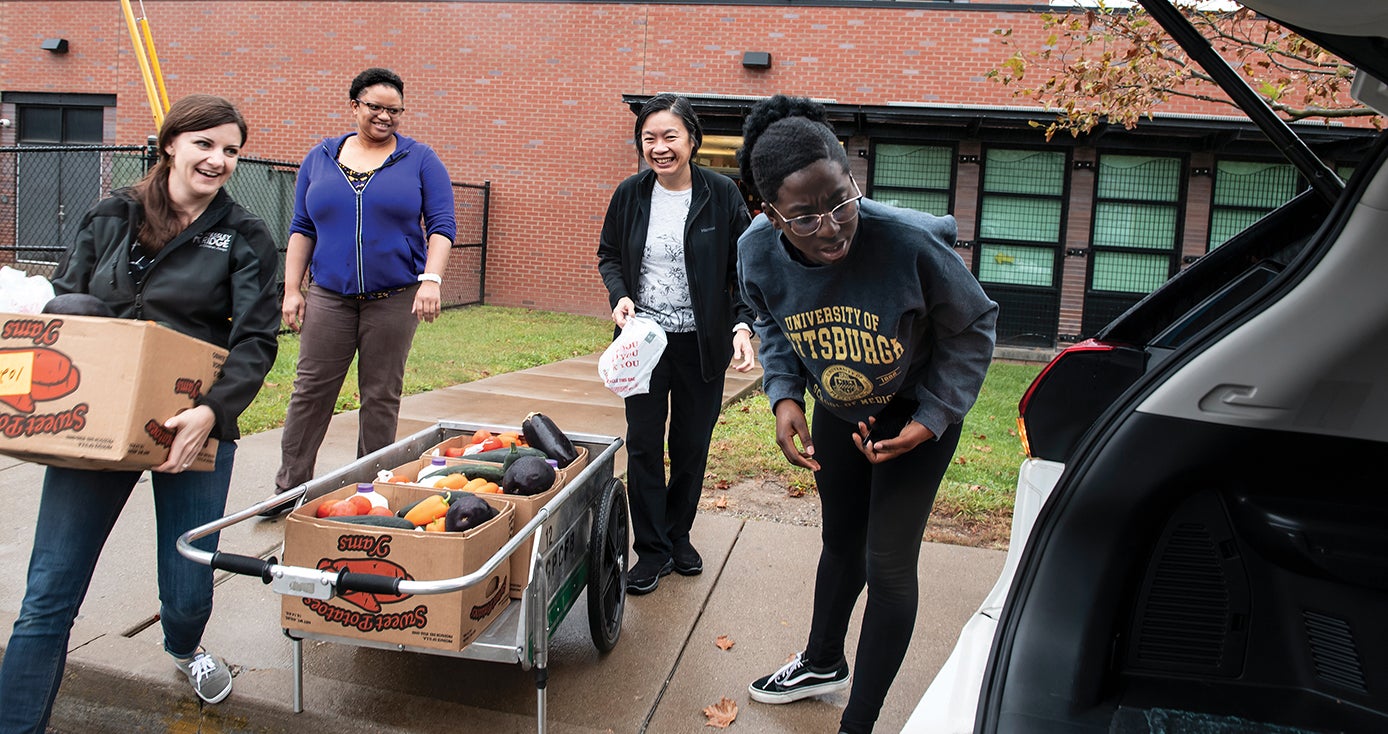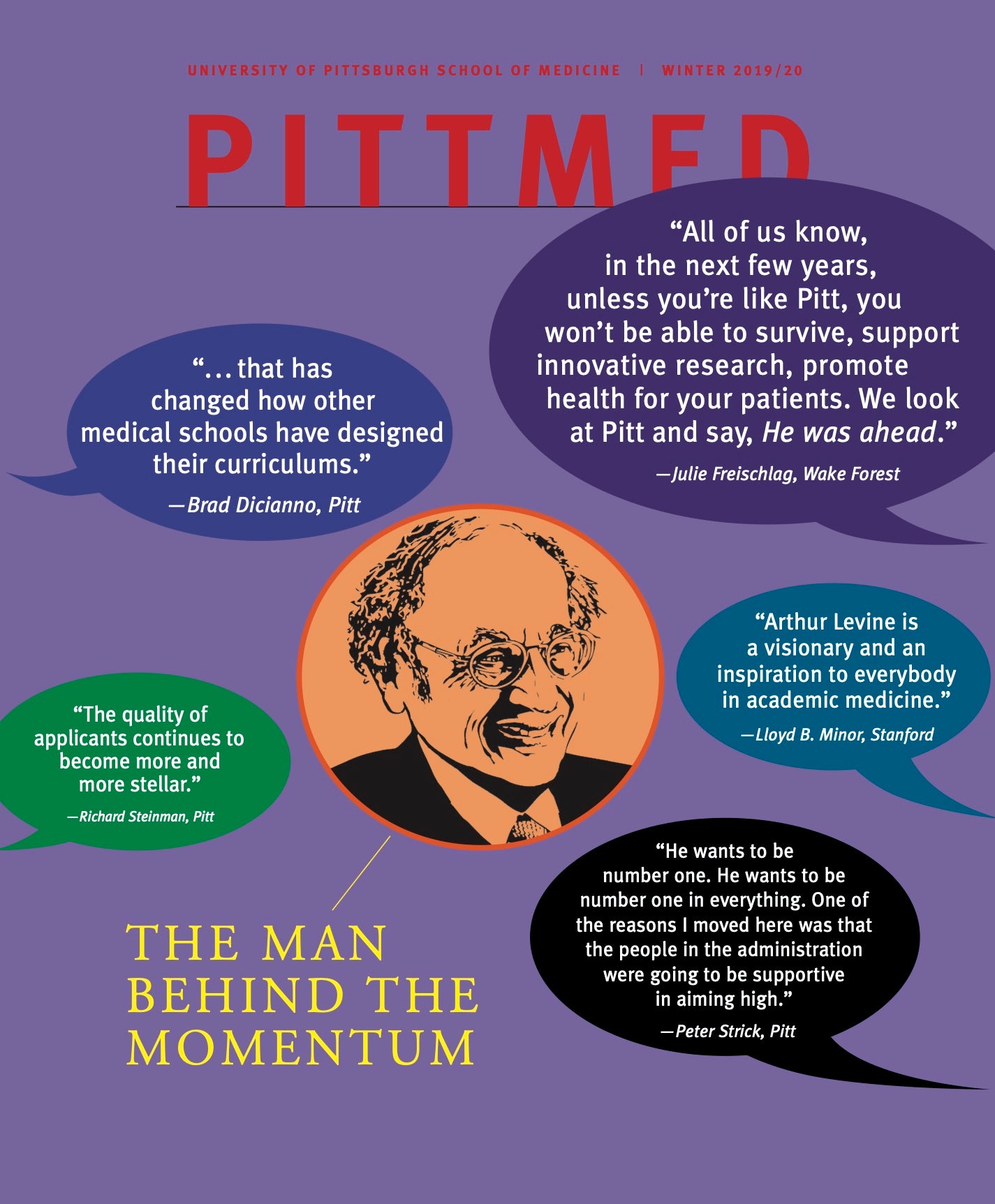
Subscribe to Pittwire Today
Get the most interesting and important stories from the University of Pittsburgh.Delivering More Than Just Groceries
This article, written by Alyce Palko, originally appeared in the winter 2019/20 issue of Pitt Med magazine.
The back of the car looks like the medical students just bought out a farmer’s market. Several boxes rest there, filled with fresh produce—green cucumbers, yellow squash, red apples. Each carton is on its way to somebody’s home. They are almost too heavy to lift, but the students can manage one at a time. “It requires some muscle,” says Thuy Bui, associate professor of medicine and director of the Social Medicine Fellows and home visit initiative at the University of Pittsburgh School of Medicine.
Partnering with the Greater Pittsburgh Community Food Bank Produce to People program, once a month, Bui and her med student team deliver the likes of broccoli, Brussels sprouts and basic medical attention to patients in their homes. Their clients are referred through Alma Illery Medical Center in Homewood and UPMC Montefiore; people can also apply through the Community Engagement Center in Homewood.
Casey Tompkins-Rhoades, a third-year medical student, said the program seeks out people “who sometimes get overlooked by the healthcare system.”
She and her classmates wanted to help break down barriers to good health that some Pittsburghers face—like limited mobility or financial issues.
Lola Adebiyi (Class of ’21), lead student coordinator, described how, after bringing the produce into a home, the team would begin with a quick check of the patient’s heart, lungs and blood pressure. Then, the team addresses other topics appropriate to that patient.
If a patient has diabetes, for instance, the team might discuss sugar levels and help to set up the patient’s next clinic visit with Bui, noted Adebiyi. The team might also check on a patient’s medications and take note of refills.
At the end of each appointment, the students make a point of asking patients about “whatever else is on their mind,” said Adebiyi, and this is where real connection happens. Adebiyi said that she notices “how appreciative people are of seeing people of color in medicine. It’s something I always take home with me and keep in my heart.”
Something else she heard often: requests for return visits, with more fresh and colorful produce, of course.
Read more articles from Pitt Med magazine winter 2019/20 issue.



